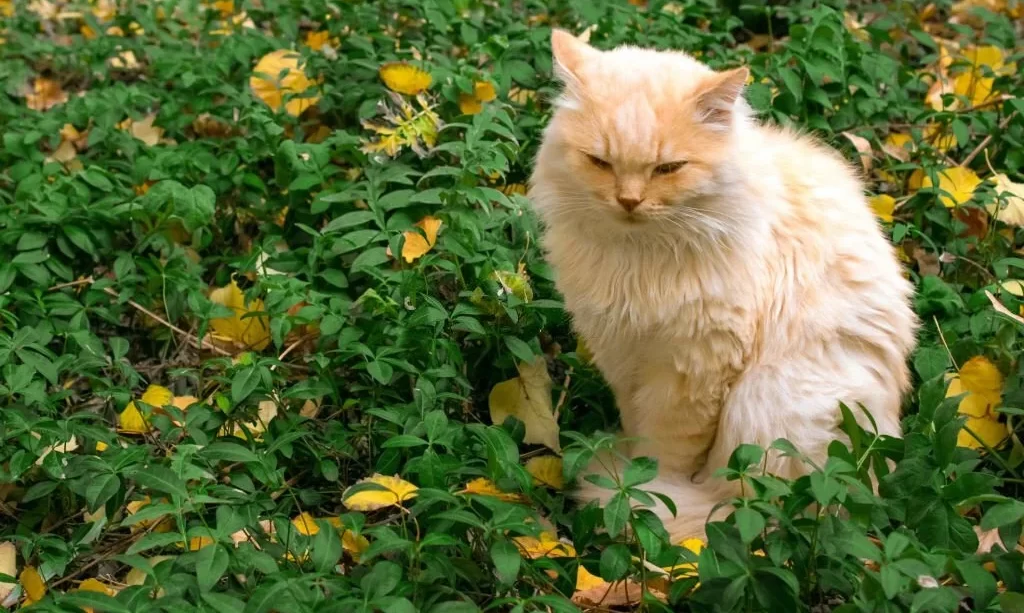Witch hazel, a versatile and popular natural remedy, has long found its place in the world of human skincare and medicine. Known for its soothing and astringent properties, it’s often used to alleviate skin irritations, insect bites, and minor wounds. However, when it comes to the safety of using witch hazel around our feline friends, questions arise. In this comprehensive guide, we’ll explore the potential risks and benefits of witch hazel for cats. Cats have unique physiology and sensitivities, and understanding the potential implications of using witch hazel is crucial to ensure the well-being of these beloved pets.
Witch Hazel
Witch hazel, derived from the Hamamelis virginiana plant, has been a staple in the world of human skincare and medicine for centuries. Its anti-inflammatory and astringent properties make it a popular choice for addressing a range of skin concerns. From reducing swelling and itching to cleansing minor wounds, witch hazel has become a trusted household remedy. Its gentle, natural qualities have endeared it to many, raising questions about its potential use in feline care.
Safety Concerns for Cats
Cats possess a unique physiology compared to humans, and their grooming habits further set them apart. It’s vital to recognize these distinctions when evaluating the safety of substances like witch hazel around cats. While witch hazel is generally considered safe for humans, the same cannot necessarily be said for our feline companions. Cats have sensitive skin and may react differently to substances applied topically. Moreover, their penchant for grooming exposes them to the risk of ingesting substances that are safe for external use but not for internal consumption. These concerns underscore the necessity of considering feline physiology and habits when deciding whether witch hazel is a safe option for your cat.
Potential Risks of Witch Hazel for Cats
While witch hazel has proven beneficial for humans, it’s essential to acknowledge the potential risks it may pose to our feline companions. Witch hazel contains several components, including alcohol and tannins, which could be problematic for cats. Ingesting witch hazel or absorbing it through their skin could lead to adverse reactions. Cats may be at risk of experiencing dermatitis or skin irritation, especially if the witch hazel solution is undiluted. Additionally, if a cat ingests witch hazel, it might lead to gastrointestinal discomfort. These potential risks highlight the need for caution when considering the use of witch hazel around cats.
Safe Usage Guidelines
To minimize the potential risks associated with witch hazel, it’s crucial to follow safe usage guidelines. First and foremost, moderation is key. Limit the use of witch hazel and only apply it when necessary. When using witch hazel topically, consider diluting it to reduce its potency and minimize the risk of skin irritation. Avoid using witch hazel on open wounds or broken skin, as the cat’s body can absorb larger quantities of the substance in these cases. Proper application techniques and controlled usage can help ensure the well-being of your cat.
Alternative Solutions for Cat Care
To address common cat-related concerns, such as skin irritations, there are alternative solutions that are safer for cats. Many cat-safe products are available in the market, formulated specifically to cater to feline needs. Additionally, natural remedies like aloe vera gel, oatmeal baths, or chamomile tea may offer similar benefits without the risks associated with witch hazel. These alternatives provide peace of mind for cat owners looking to provide care without compromising their pet’s safety.
Conclusion
In conclusion, the use of witch hazel around cats should be approached with caution. While this natural remedy has many benefits for humans, cats possess unique sensitivities and grooming habits that can make its use potentially risky. Understanding the potential risks, safe usage guidelines, and alternative solutions for cat care is essential. Ultimately, the health and well-being of our feline companions should remain a top priority. It’s advisable to consult with a veterinarian before introducing any unfamiliar product or substance into your cat’s environment, ensuring their safety and comfort at all times.




